#Moshoeshoe II
Explore tagged Tumblr posts
Text

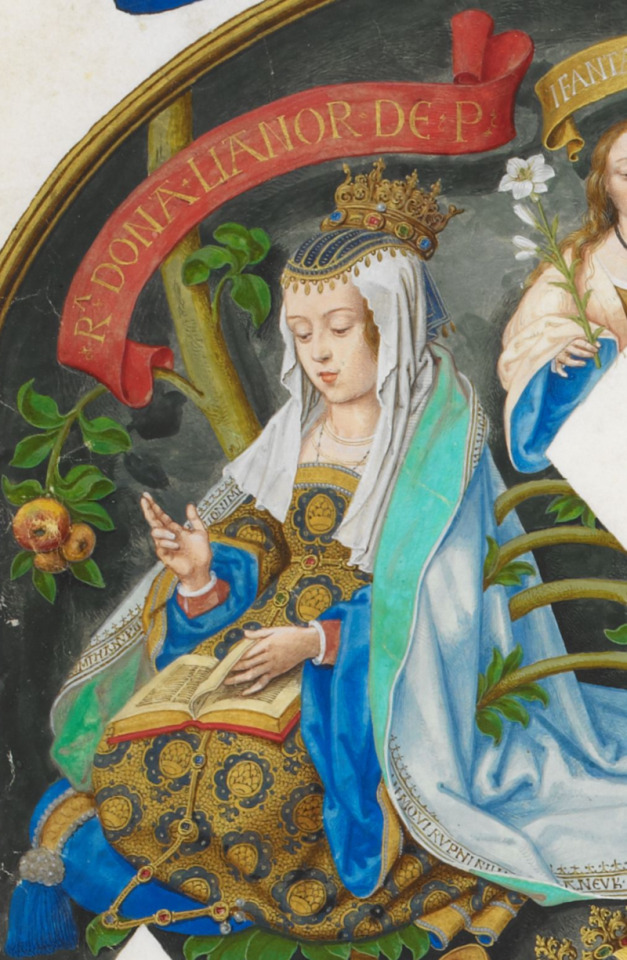
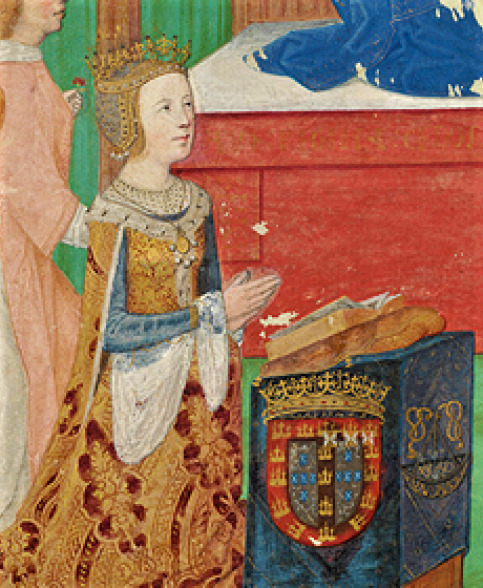

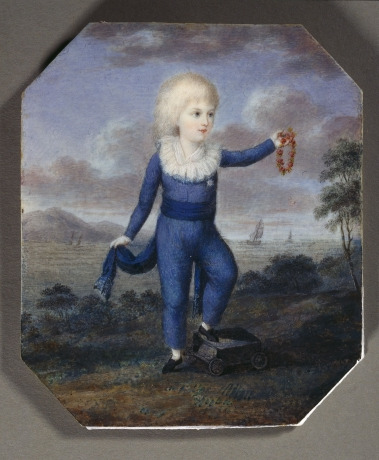
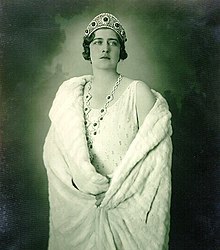

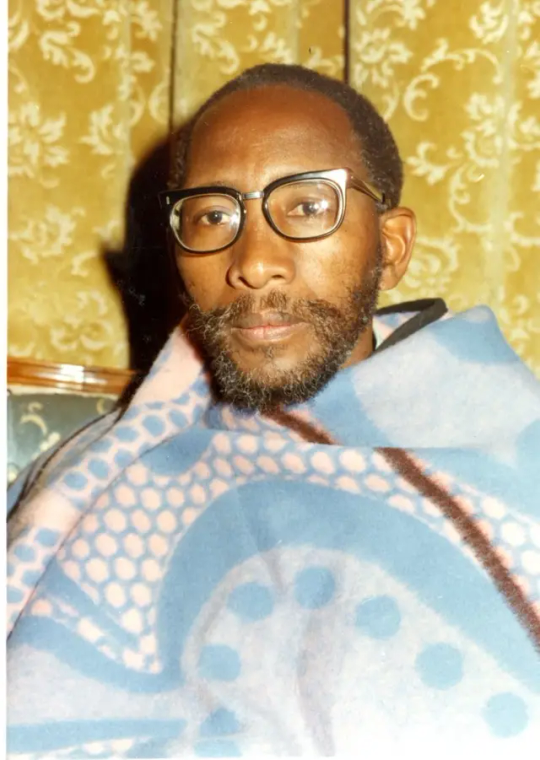


Royal Birthdays for today, May 2nd:
Yongle Emperor, Emperor of China, 1360
Eleanor of Aragon, Queen of Portugal, 1402
Eleanor of Viseu, Queen of Portugal, 1458
Catherine II, Empress and Autocrat of All the Russias, 1729
Alberto, Prince of Naples and Sicily, 1792
Helen of Greece and Denmark, Queen Mother of Romania,1896
Faisal II, King of Iraq, 1935
Moshoeshoe II, King of Lesotho, 1938
Nathalie of Sayn-Wittgenstein-Berleburg, German Princess, 1975
Charlotte of Wales, British Princess, 2015
#princess charlotte#eleanor of aragon#eleanor of viseu#catherine ii#catherine the great#helen of greece and denmark#yongle emperor#prince alberto#faisal ii#Moshoeshoe II#Nathalie of Sayn-Wittgenstein-Berleburg#royal birthdays#long live the queue
6 notes
·
View notes
Text
Gallery Collection 001

Published: 2-21-2024 | Updated: N/A SUMMARY This is the first in a series of upcoming investment objects for Sims 2 – things your sims can use to generate income over time. From 1975-2000, Anheuser-Busch, Inc. commissioned 30 paintings of African kings and queens for an extended outreach and marketing campaign. This set of paintings features artwork from this amazing series. Celebrate Black History Month 2024! #co2bhm #bhm2024 #sims2bhm. *No copyright infringement intended – I own no rights to these images.
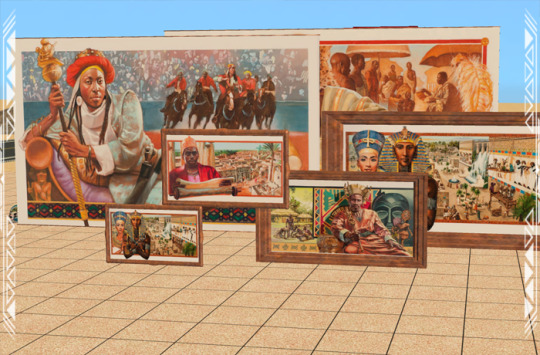

DETAILS Requires Sims 2. Requires Apartment Life for shiftability. §1K-15K | Buy > Deco > Wall Hangings Paintings are centered on 1-tile but cover more tiles than that. They come in various gallery sizes and images have been edited to fit the mesh. After purchase, their value increases by approximately 2% daily – watch out for burglars! Files with “MESH” in their name are REQUIRED. Frame recolors include EA/Maxis and yeti textures. Frame and painting recolors are merged into two files so you’ll have to take them or leave them. ITEMS Great Kings & Queens of Africa: Paintings 001-006 (92-764 poly) DOWNLOAD (choose one) from SFS | from MEGA
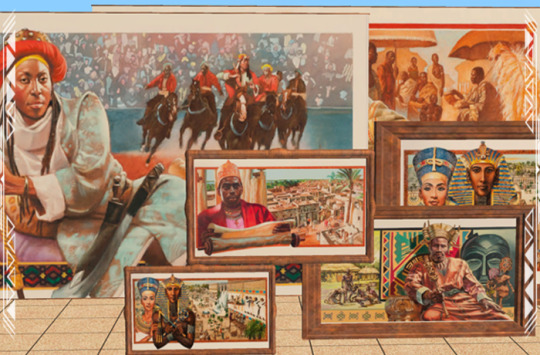

IMAGES
Akhenaton Pharaoh of Egypt (1375-1358 BC) by Barbara Higgins Bond
Alfonso I King of the Kongo (circa 1486-1543) by Carl Owens (1929-2002)
Askia Muhammaed Toure King of Songhay (1493-1529) by Leo Dillon
Benhanzin Hossu Bowelle—The King Shark (1841-1906) by Thomas Blackshear II
Cleopatra VII Queen of Egypt (69-30 BC) by Ann Marshall
Hannibal Ruler of Carthage (247-183 BC) by Charles Lilly
Hatshepsut The Ablest Queen of Far Antiquity (1503-1482 BC) by Dean Mitchell
Idris Alooma Sultan of Bornu (1580-1617) by Charles Lilly (1949-)
Ja Ja King of the Opobo (1821-1891) by Jonathan Knight
Khama III The Good King of Bechuanaland (1819-1923) by Carl Owens
Makeda Queen of Sheba (960 BC) by Debra Edgerton
Mansa Kankan Musa King of Mali (1306-1337) by Barbara Higgins Bond
Menelek II King of Kings of Abyssinia (1844-1913) by Dow Miller
Moshoeshoe King of Batsutoland (circa 1786-1870) by Jerry Pinkney
Mwana Ngana Ndumba Tembo—Ruler of the Angolan Tchokwe (1840-1880 circa) by Kenneth Calvert
Nandi Queen of Zululand (1778-1826 AD) by HM Rahsaan Fort II
Nefertari Nubian Queen of Egypt (192-1225 BC) by Steve Clay
Nehanda of Zimbabwe (1862-1898) by Lydia Thompson
Nzingha—Amazon Queen of Matambo (1582-1663) by Dorothy Carter
Osei Tutu King of Asante (circa 1650-1717) by Alfred Smith
Queen Amina of Zaria (1588-1589) by Floyd Cooper
Samory Toure The Black Napoleon of the Sudan (1830-1900) by Ezra Tucker
Shaka-King of the Zulus (1787-1828) by Paul Collins
Shamba Bolongongo African King of Peace (1600-1620) by Roy LaGrone
Sunni Ali Beer King of Songhay (circa 1442-1492) by Leo Dillon
Taharqa King of Nubia (710-664 BC) by John Thomas Biggers
Tenkamenin King of Ghana (1037-1075 AD) by Alexander Bostic
Thutmose III Pharaoh of Egypt (753-712 BC) by Antonio Wade
Tiye The Nubian Queen of Egypt (circa 1415-1340 BC) by Leonard Jenkins
Yaa Asantewa Queen of Ghana (1863-1923) by Barbara Higgins Bond CREDITS No copyright infringement intended – I own no rights to these images. Artwork and trademarks are the property of their respective creators and/or owners. If this exceeds fair use, please contact me via private message. Thanks: Simming and Sketchfab Communities. Sources: Any Color You Like (CuriousB, 2010), Beyno (Korn via BBFonts), Console Certificates (d_dgjdhh, 2019; 2011), EA/Maxis, Gyeongbokgung Sajeongjeon Painting (National Heritage Administration, 2024 via CCA; Sketchfab), Great Kings and Queens of Africa Series (Anheuser-Busch, Inc., 1975-2000; Kentake, 2016), Offuturistic Infographic (Freepik), Painting by Zdzislaw Beksinski (Sosnowski, 2018 via CCA), Yeti Metals (Shastakiss, 2017).
88 notes
·
View notes
Text

Prime Minister Joseph Leabua Jonathan (October 30, 1914 - April 5, 1987) was the first Prime Minister of independent Lesotho. He was born in Leribe, Basutoland, the great-grandchild of King Moshoeshoe I, the founder of the Basuto nation. His parents were Jonathan Ramanemane Molapo and ‘Makatiso Molapo. His father was a minor chief.
He accompanied several delegations that journeyed to London requesting self-government for the protectorate. He founded the Basutoland National Party and the following year the party participated in the first elections in the colony, coming in fourth in the election.
In the pre-independence elections of April 1965, the BNP won 31 of the 60 parliamentary seats. He was appointed Prime Minister. King Moshoeshoe II was the titular head of government but he was Prime Minister and as such was head of state.
King Moshoeshoe II tried to expand his powers, a move opposed by him who warned the king to stay out of politics or abdicate. Supporters of King Moshoeshoe II clashed with police. Nine people were killed. He placed the monarch under house arrest in Maseru. King Moshoeshoe II gave up his attempt to expand his powers and agreed to abide by the Constitution.
The first post-independence elections were held in January 1970. He cited election irregularities, nullified the election, and declared a state of emergency in the country. The constitution was suspended and parliament was dissolved.
An interim assembly was appointed by his government. He allowed the African National Congress which was fighting to end apartheid in South Africa, to establish a presence in Lesotho. South Africa claimed that Lesotho had become a major base for ANC guerrillas and imposed a blockade that reduced the flow of goods in and out of the country.
Growing internal dissent coupled with the South African blockade led the Lesotho military to stage a coup on January 20, 1986. The coup led by Major General Justin Metsing Lekhanya deposed him and his government. He was placed under house arrest and was allowed to seek medical treatment in South Africa.
He married ‘Mantahli Paleo Theresia Jonathan (1937). They had seven children. #africanhistory365 #africanexcellence
0 notes
Text




IMAGENES Y DATOS INTERESANTES DEL 4 DE OCTUBRE DE 2024
Día Mundial de los Animales, Día Mundial de la Sonrisa, Semana Mundial del Espacio, Semana Vegetariana, Semana Internacional de la Crianza en Brazos, Año Internacional de los Camélidos.
Santa Berenice y San Francisco de Asís.
Tal día como hoy en el año 1991
Se firma en Madrid (España) el Protocolo al Tratado Antártico sobre Protección del Medio Ambiente que, en su artículo 2º, designa a la Antártida como una "reserva natural dedicada a la paz y a la ciencia". Entrará en vigor en 1998. (Hace 33 años)
1966
Lesoto, desde 1868 colonia británica, logra su independencia del Reino Unido y entra a formar parte de la Commonwealth como monarquía independiente. En enero de 1970, un golpe de estado disolverá el Congreso Nacional y mandará al exilio al rey Moshoeshoe II. (Hace 58 años)
1957
La URSS logra un golpe de efecto al lanzar por sorpresa al espacio el "Sputnik", primer satélite artificial del mundo. Los americanos quedan absolutamente consternados: un país considerado por ellos tecnológicamente inferior se les ha adelantado en la carrera espacial. (Hace 67 años)
1824
En México, el Congreso constituyente proclama la Constitución Federal de los Estados Unidos de México. (Hace 200 años)
1814
Entra en Francia para ocultarse, el español Francisco Espoz y Mina, antiguo guerrillero, al fracasar en su intento de tomar la ciudad de Pamplona para clavar allí la bandera de la libertad y restablecer la Constitución de 1812 y poder hacer frente al absolutismo despótico de Fernando VII. (Hace 210 años)
1582
Auspiciada por el papa Gregorio XIII, a media noche de este día, entrará en vigor una reforma del calendario que superará y eliminará el error de 10 días respecto al año solar que se ha ido produciendo desde la implantación del calendario juliano. Mañana no será 5 de octubre de 1582 sino 15 de octubre de ese mismo año. (Hace 442 años)
1540
En México, Francisco de Montejo y León, funda la villa de San Francisco de Campeche (actual Campeche), para establecer una base de operaciones que sirva de entrada a la provincia y de puerto principal. (Hace 484 años)
1511
Fernando el Católico se alía con los Estados Pontificios, con el Papa Julio II a la cabeza, y Venecia, en la llamada "Santa Liga" para hacer frente y luchar contra el creciente poderío de Francia e Italia. (Hace 513 años)
1190
El rey Ricardo I Corazón de León, en su viaje camino de Jerusalén durante la Tercera Cruzada, invade Sicilia y captura la importante ciudad de Messina, después de que Tancredo I de Sicilia encarcelara a la reina Juana de Inglaterra, reina consorte de Sicilia y hermana del propio Ricardo I, y a quien Tancredo no ha entregado el dinero que ha heredado en el testamento de su marido Guillermo, tras haberse negado a liberarla y a devolverle su herencia. Tras saquear y quemar la ciudad, Ricardo I establecerá allí su base y permanecerá en ese lugar hasta que Tancredo, finalmente, acceda a firmar un tratado fechado el 4 de marzo de 1191, mediante el cual se pondrá en libertad a Juana que recibirá asimismo su legítima herencia, entre otros acuerdos. (Hace 834 años)
0 notes
Text
1965 Lesotho National Elections (SUCCESSFUL!)
Finally some good news: Lesotho, a country with an independence success story and a transition that looked almost easy, just completed their first national general elections. And it was a peaceful affair! 😊 1965, peaceful first-past-the-post general elections in a newly independent area of Southern Africa. It feels almost like a dream compared to the strife I’ve seen elsewhere in these travels o’ mine. The resulting National Assembly of the Parliament of the Kingdom of Lesotho is 60 representatives strong, and headed by the Basotho National Party. The king is King Moshoeshoe II (long live the king? Is it too soon to say that here?) with Chief Leabua Jonathan as the prime minister. I’m thrilled, it seems something finally landed on its feet. This is decolonization done right and seen through properly.

I’m standing here at the site of the national assembly building in the capital, Maseru. Here’s the wild part: the elections were pretty smooth, fairly inclusive, resulted in government formation… and Lesotho is land-locked entirely within South Africa. South Africa is doing remarkably less well (if you’ll remember my post from Zambia and the work South Africa is doing since their… questionable policymaking in the late 40’s), and yet here we are in an independent, decolonized country with a functioning government. I’m beaming.
There’s talks of a formal constitution in the works, expected to be put in place no later than next year.
Not to keep prattling on about how cool this is, but to put it in context: there have been almost nothing but violent uprisings, coups, and descents into chaos in the area since the various territories were essentially told, “We, your imperial/colonial rulers, are heading out. Please quickly figure out how to govern yourselves appropriately. Also, figure out how to do it in a way that makes us happy enough that we follow through with disengagement. Also, you will get very little outside assistance or resources. Also, here are your new borders—we did not draw them along tribal or linguistic lines and sometimes not even along physical divisions. Good luck, chaps!” And this place, little Lesotho, actually did it.
Now all they have to do is hold it.
Government of Lesotho. (2023, July 14). The National Assembly. Government of the Kingdom of Lesotho. https://www.gov.ls/the-national-assembly/
BBC. (2022, November 4). Lesotho Profile – Timeline. BBC. https://www.bbc.com/news/world-africa-13729501
(2016). Old Parliament Buildings, Maseru. Vymaps. https://vymaps.com/LS/Old-Parliament-Buildings-Maseru-385190044919253/
0 notes
Video
instagram
Woah.... #lgbt #lgbtq #lesbian #lightskingirls #lightskin #stem #stemgirls #music #musician #weekend:45 #thursday #star #werise #imhere #keeponkeepingon #newmusicontheway #love #live #prosper #believe #tiktok #tiktoksa #africa (at Moshoeshoe II, Maseru) https://www.instagram.com/p/B1ddTnAFkF7/?igshid=y3bxr1sfbn1o
#lgbt#lgbtq#lesbian#lightskingirls#lightskin#stem#stemgirls#music#musician#weekend#thursday#star#werise#imhere#keeponkeepingon#newmusicontheway#love#live#prosper#believe#tiktok#tiktoksa#africa
2 notes
·
View notes
Photo

HeavyAreTheCrowns 6k Followers Spam!
My Favourite Royals Ever!
Prince Seeiso of Lesotho
Prince Seeiso Bereng Seeiso of Lesotho, Principal Chief of Matsieng is the younger brother of Lesotho's king, Letsie III, and son of the southern African country's late King Moshoeshoe II and the late Queen 'Mamohato Bereng
12 notes
·
View notes
Text
Holidays 3.11
Holidays
Alphabet Day
Daily Newspaper Day (UK)
Debunking Day
Dream Day
Frankenstein Day
Human Services Day
Independence Day (a.k.a. Day of Restoration; Lithuania; from USSR, 1990)
Johnny Appleseed Day
Lailat al Miraj (The Prophet’s Ascension; Islam)
Mahasivarathri Day (Sri Lanka)
Maha Shivaratree (Mauritius)
Middle Name Pride Day [Friday of Name Week]
Moshoeshoe Day (Lesotho)
National Covid-19 Day
National Funeral Director and Mortician Recognition Day
National Preschooler’s Day [2nd Friday]
National Promposal Day
National 311 Day
National Wash Your Nose Day
Prime Time Day
SXSW Day (South by Southwest begins) [2nd Friday]
Victims of Terrorism Remembrance Day (EU)
World Day of Muslim Culture, Peace, Dialogue and Film
World Plumbing Day
Worship of Tools Day
Food & Drink Celebrations
Apple Appreciation Day
Cookie Beer Day [2nd Friday]
National “Eat Your Noodles” Day
National Sofrito Day
Oatmeal Nut Waffle Day
Feast Days
Alberta of Agen (Christian; Saint)
Angus, the Culdee (Christian; Saint)
Constantine (Christian; Saint)
Douglas Adams (Humanism; Saint)
Eulogius of Cordova (Christian; Saint)
Feast Day of Hercules/Herakles (Ancient Rome/Greece)
Mussolini Day (Church of the SubGenius; Saint)
Óengus of Tallaght (Christian; Saint)
Pythagoras (Positivist; Saint)
Sophronius of Jerusalem (Christian; Saint)
Vindicianus (Christian; Saint)
Lucky & Unlucky Days
Butsumetsu (仏滅 Japan) [Unlucky all day.]
Today is Also…
Day of Year: Day 70 of 2022; 295 days remaining in the year
ISO: Day 5 of week 10 of 2022
Celtic Tree Calendar: Nuin (Ash) [Day 22 of 28]
Chinese: Month 2 (Xìngyuè), Day 9 (Gui-Hai)
Chinese Year of the: Tiger (until January 22, 2023)
Hebrew: 8 Adar II 5782
Islamic: 7 Sha-ban 1443
J Cal: 8 Ver; Sunday [8 of 30]
Julian: 26 February 2022
Moon: 62% Waxing Gibbous
Positivist: 14 Aristotle (3rd Month) [Pythagoras]
Runic Half Month: Tyr (Cosmic Pillar) [Day 13 of 15]
Season: Winter (Day 80 of 90)
Zodiac: Pisces (Day 21 of 30)
0 notes
Photo

Saint of the Day – Blessed Joseph Gerard O.M.I. (1831-1914) Priest, Religious, Missionary “The Apostle of Lesotho”, (12 March 1831 – 29 May 1914) was a French Roman Catholic priest and a professed member from the Missionary Oblates of Mary Immaculate, the order founded by St Eugene de Mazenod O.M.I. (1782-1861), Bishop of Marseille, founder of the Congregation of the Missionaries, Oblates of Mary Immaculate whose Memorial we celebrated on 21 May.
youtube
Joseph Gerard was born in 1831 in Bouxieres-aux-Chenes in the Diocese of Nancy, France. He joined the Missionary Oblates of Mary Immaculate at the age of 20 and at the age of 22 was sent by St Eugene de Mazenod as a missionary to Southern Africa, never to see his family or homeland again. He was ordained a priest in 1854 in Pietermaritzburg and at first served the Oblate mission to the Zulu people, later joining Bishop Allard, the Bishop of Natal, in setting up the first Catholic mission in Lesotho. With the permission of the great Chief Moshoeshoe they founded Motse-oa-Ma-Jesu (the Village of the Mother of Jesus) thirty two kilometres south of Moshoeshoe’s stronghold of Thaba Bosiu. (The village which they founded later became Roma, site of the Catholic University College and now the University of Lesotho.)

Joseph Gerard was well respected by Chief Moshoeshoe, particulaly because he remained with the Basotho during the three wars between the Basotho and the Orange Free State. It is said that it was through Joseph Gerard’s efforts that Chief Moshoeshoe sought the protection of the British at the end of the wars, a decision which resulted in Lesotho becoming a British Protectorate and an Independent country today.
Joseph Gerard’s mission grew slowly and by the end of 1879, when he was already 48 years of age, there were only 700 Catholics in Lesotho. He persevered, however in prayer, faith and work, remaining in Lesotho as a missionary for the rest of his life.

The Oblate mission to the Basotho grew and flourished. He died on 29 May 1914 at the age of 83, a man greatly revered by the people of Lesotho. The fact that Lesotho is very largely a Catholic country today, can be traced back to those early beginnings at the Village of the Mother of Jesus.


Father Joseph Gerard was Beatified by Pope John-Paul II in Maseru, Lesotho, in 1988.
Throughout his years in Lesotho Fr Gerard’s concern and care for the sick and the old was remarkable. Despite the distance, despite the weather, despite the inconvenience, he would set out, on foot or on horseback, carrying the Blessed Sacrament, to minister to those afflicted. His deep devotion to Mary was absorbed by his first converts and since his day the nation has been dedicated to Mary Immaculate.
The last years of Fr Gerard´s life were spent back at his first mission, Roma. Up to a month before his death he was on horseback, out on the mountain tracks caring for those in need.
In one of his retreat notes, Fr Gerard gave the key to his constancy when he wrote about the people he served: “We must love them, love them in spite of everything, love them always”. He lived out his belief in the joy of spreading God’s Word, despite the hardships and opposition he encountered.
Blessed Joseph Gerard, Pray for Africa, pray for us all!

17 notes
·
View notes
Photo
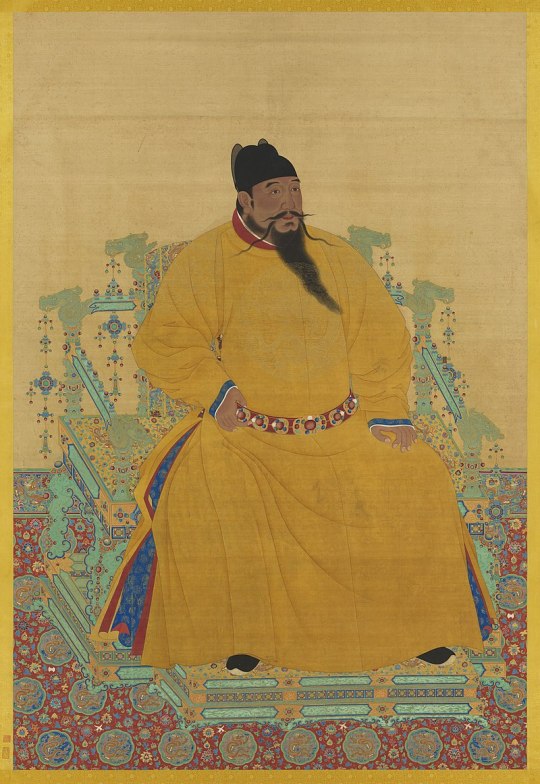

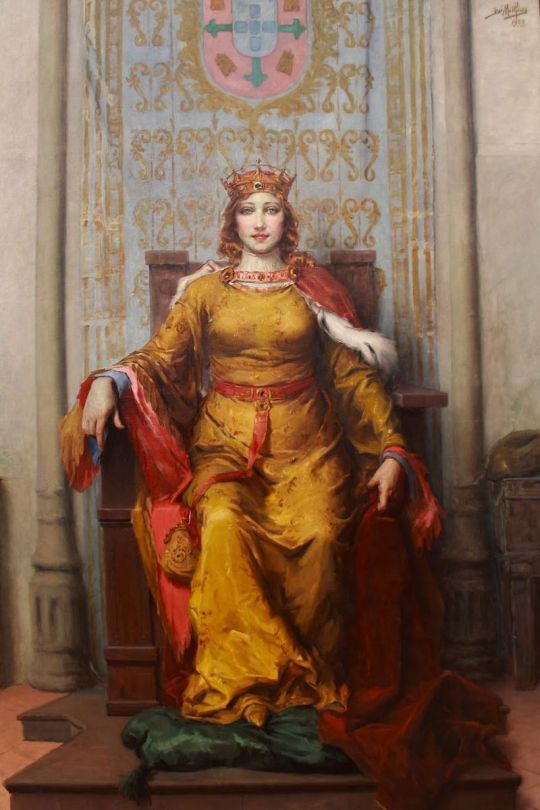

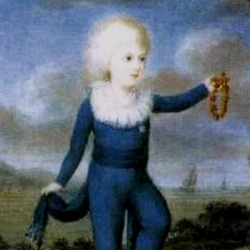

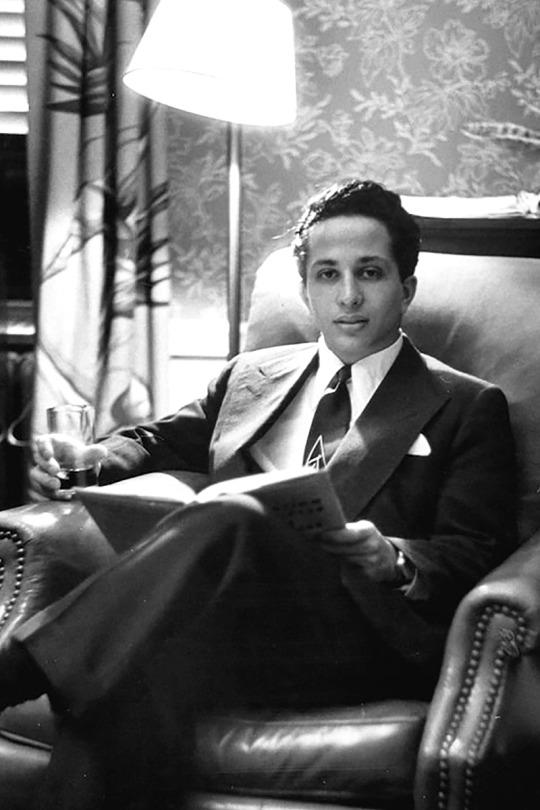
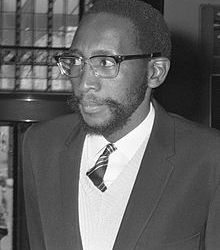


Royal Birthdays for today, May 2nd:
Yongle Emperor, Emperor of China, 1360
Eleanor of Aragon, Queen of Portugal, 1402
Eleanor of Viseu, Queen of Portugal, 1458
Catherine II, Empress and Autocrat of All the Russias, 1729
Alberto, Prince of Naples and Sicily, 1792
Helen of Greece and Denmark, Queen Mother of Romania,1896
Faisal II, King of Iraq, 1935
Moshoeshoe II, King of Lesotho, 1938
Nathalie of Sayn-Wittgenstein-Berleburg, German Princess, 1975
Charlotte of Wales, British Princess, 2015
#princess charlotte#catherine ii#eleanor of aragon#eleanor of viseu#prince alberto#helen of greece and denmark#yongle emperor#faisal ii#Moshoeshoe II#Nathalie of Sayn-Wittgenstein-Berleburg#royal birthdays#long live the queue
13 notes
·
View notes
Text

King Constantine Bereng Seeiso (May 2, 1928 - January 6, 1996) was born in Thabang, Basutoland. He was the eldest son of Paramount Chief Seeiso (Simon Seeiso Griffith) and Mofumali Mabereng. He was educated at the Catholic Missionary Centre at Roma, outside Maseru, the capital of Basutoland but attended high school in England at Ampleforth College in York, England. He attended Corpus Christi College, Oxford, England.
Following the death of his father in 1960, the future king became Paramount Chief of Basutoland. He supported the struggle against British colonial rule in his country and against apartheid in South Africa. Basutoland gained independence in 1966 and changed its name to Lesotho.
He became king of the new country and took the name Moshoeshoe II in honor of the founder of his dynasty. Lesotho had a constitution an elected Prime Minister and a parliament. Disagreement soon arose between the Prime Minister, Leabua Jonathan, and over the power and authority of each position. In December 1966, he was placed under house arrest by the Prime Minister. He was released after agreeing to honor the constitution and recognize the executive powers of the Prime Minister. The government felt that he had not kept his promise and in 1970 he was forced into exile in the Netherlands.
In 1986 Major-General Metsing Lekhanya led a coup that overthrew the elected government. The new government increased the King’s powers but the alliance grew sour and in 1990 he was forced into exile. When he refused to accept a limitation on his powers, Lekhanya replaced the monarch with his son, Prince Bereng Seeiso, who was proclaimed King Letsie III.
King Letsie III tried to interfere with the government of the popular, newly elected Prime Minister Ntsu Mokhehle. King Letsie III abdicated in favor of his father. In 1995 he was installed as King and head of state. He was killed in an automobile accident in the Maluti Mountains of Lesotho.
He was married to ‘Mamohato Bereng Seeiso. They were the parents of the current king of Lesotho, Letsie III. #africanhistory365 #africanexcellence
1 note
·
View note
Text
#SABC: "SABC News - Zimbabwe vows to support Lesotho in upcoming elections:Tuesday 16 May 2017"
#SABC: “SABC News – Zimbabwe vows to support Lesotho in upcoming elections:Tuesday 16 May 2017”
[ad_1]
President Robert Mugabe with King Moshoeshoe II in Zimbabwe. (SABC)
President Robert Mugabe says Zimbabwe and the SADC region will help Lesotho during the upcoming elections. Mugabe made the statement during the visit of Lesotho King Letsie in Harare Zimbabwe.
King Letsie received a warm welcome. The army dethroned his father King…
View On WordPress
0 notes
Text
Lesotho country profile
Map of Lesotho
The Kingdom of Lesotho is made up mostly of highlands, where many of the villages can be reached only on horseback, by foot or light aircraft.
Resources are scarce – a consequence of the harsh environment of the highland plateau and limited agricultural space in the lowlands.
The former British protectorate has been heavily dependent on the country which completely surrounds it – South Africa.
Over the decades thousands of workers have been forced by the lack of job opportunities to find work at South African mines.
The Lesotho Highlands Water Project was completed in the 1990s to export water to South Africa.
Head of state: King Letsie III
Lesotho’s King Letsie III
King Letsie III succeeded his father, King Moshoeshoe II, who was dethroned in 1990.
Five years later, after the return to civilian government and amid political instability, he abdicated and his father was reinstated as monarch.
Letsie III was restored as king in 1996 after his father died in a car accident. The monarch has no legislative or executive powers.
Prime minister: Moeketsi Majoro
Mr Majoro (right), with his predecessor Thomas Thabane
Finance Minister Majoro Thomas took over as prime minister in May 2020, after the resignation of veteran leader Thomas Thabane, who was named as a suspect in the murder of his own ex-wife.Mr Thabane’s All Basotho Convention (ABC) had won early elections in June 2017, and continues to govern in coalition with three other parties.
Man riding a donkey in Lesotho
Radio is the most-popular medium. As well as domestic outlets, South African radio and TV stations can be received.
1820s – Basutoland founded by Moshoeshoe, who unites various groups to repel challenges from Zulus.
1834 – Territorial encroachment by Boer trekkers starts decades of conflict.
1860s – Becomes a British protectorate.
1871 – Annexed to the Cape Colony without people’s consent.
1884 – Becomes a British colony after revolt against Cape Colonial rule. Paramount chiefs retain large degree of autonomy.
Story continues
1966 – Independence as Kingdom of Lesotho, with Moshoeshoe II as king and Chief Leabua Jonathan (Basotho National Party) as prime minister.
1998 – Troops from the region restore order following disputed elections.
2004 – Official opening of first phase of Lesotho Highlands Water Project.
The Lesotho Highlands Water Project provides water for South Africa’s industrial heartland
Source link
قالب وردپرس
from World Wide News https://ift.tt/2Un894q
0 notes
Photo




As you are no doubt aware, the Kingdom of Lesotho is surrounded entirely by the Republic of South Africa. While it was an independent kingdom for much of its history, in the late 1860s King Moshoeshoe appealed to Queen Victoria to make Basutoland a British colony when it became apparent the Boers were set to annex the entirety of Basutoland (and this was after the Basotho had rather embarrassingly defeated the British earlier in the 1850s). Basutoland remained a Crown Colony until independence in 1966, when the monarchy was restored and [self-styled] King Moshoeshoe II took over. His son, King Letsie III, is the current king of Lesotho (pronounced, it should be noted, La-soo-too).
Stamp details: Stamp on top: Issued on: December 1, 1933 From: Maseru, Basutoland MC #1
Second row left: Issued on: January 24, 1966 From: Maseru, Basutoland MC #102
Second row right: Issued on: October 4, 1966 From: Maseru, Kingdom of Lesotho MC #1
Stamp on bottom: Issued on: October 4, 2016 From: Maseru, Kingdom of Lesotho MC #2031
Recognized as a sovereign state by the UN: Yes (since October 17, 1966) Official name: Kingdom of Lesotho; 'Muso oa Lesotho Member of the Universal Postal Union: Yes (since September 6, 1967)
2 notes
·
View notes
Photo

Lesotho Moshoeshoe Ii 1976 10 Maloti, 10Th Anniversary Of Independence, Silver https://rover.ebay.com/rover/1/711-53200-19255-0/1?ff3=2&toolid=10040&campid=5337817697&customid=&lgeo=1&vectorid=229466&item=263135583648
0 notes
Photo

HeavyAreTheCrowns 6k Followers Spam!
My Favourite Royals Ever!
Prince Seeiso of Lesotho
Prince Seeiso Bereng Seeiso of Lesotho, Principal Chief of Matsieng is the younger brother of Lesotho's king, Letsie III, and son of the southern African country's late King Moshoeshoe II and the late Queen 'Mamohato Bereng
12 notes
·
View notes